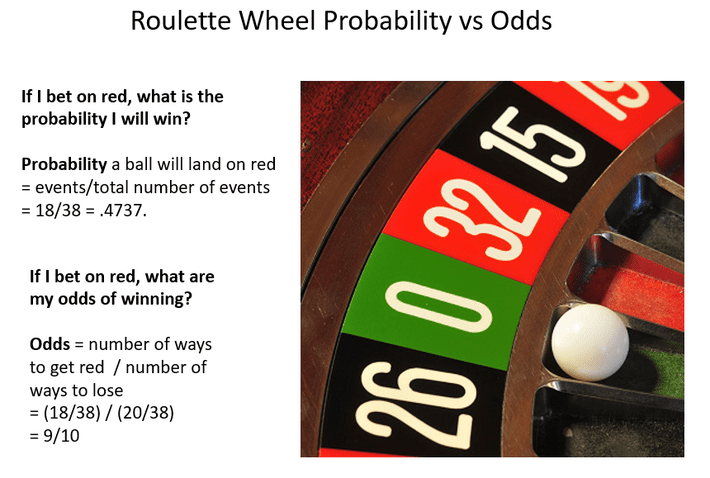
Data Points
- There are a number of different terms used for probability in statistics.
- Each has a distinct (and usually precise) meaning.
- This article examines some of these terms and shows examples.
- Using the right terms can make your own data stories more understandable.
If you are confused about the difference between probability, chance, and odds, you’re not alone. In their paper Confusion Between Odds and Probability, a Pandemic?[1] , Fulton et al. surveyed eight online dictionaries (including Cambridge, Macmillan, and Merriam-Webster), and found that while they all defined probability in a similar way, all eight gave “inconsistent and computationally different definitions of the term odds.”
The question is, does it really matter if you use the correct definition? Or is it just enough to get your point across (as long as you do the math right)? It can be of vital importance to get the terminology right, especially if you’re working in areas with significant monetary or social responsibilities. But in most cases, no one will be able to tell the difference and–unless you’re publishing your work– it’s highly unlikely you’ll be called out for making the wrong choice.
If you do work in a field where it’s important to be precise, or you just want to clarify their definitions for your own purposes, here are short definitions of the three terms:
- Probability. The fraction you would expect to see a certain event occurring in many trials. It is expressed as a real number within the interval [0,1]. For example, the probability of event A happening might be 0.75. This is more formally known as the normalized probability.
- Chance or Likelihood. Chance, a synonym of probability, is usually expressed as a percentage (e.g. 75%). Chance is used primarily in weather predication, and typically indicates the likelihood of a given weather event occurring in a specific area over a certain period of time.
- Odds. Ratios of probabilities, they can be defined in two different ways: odds in favor of an event (“odds on”) or against an event A (“Odds Against). Odds can be expressed as a ratio of the probability an event will happen divided by the probability an event won’t happen: Odds in favor of A = A / (1 – A), usually simplified to lowest terms., For instance, if the probability of an event occurring is 0.75, then the odds for it happening are 0.75/0.25 = 3/1 = 3 to 1 for, while the probability that it doesn’t occur is 1 to 3 against.
- American Gambling odds are often stated as plus or minus a number. For instance, on Oct 24, 2020, one betting house had the American Presidential race at Joe Biden at -185, Donald Trump at +135. These numbers generally reflect potential payouts – if you bet $100 on Biden, you’d only get a $50 payout (beyond your $100 invested) with implied odds of around 2 to 1 for, because Biden is the odds on favorite, while Trump would have a $135 payout with odds of 5 to 2 against.
- In statistics, there’s also an odds ratio, which calculates the odds for two linked properties.The formula is slightly different, because it has to account for two events happening/not happening instead of one: OR = (a/c) / (b/d).
Odds, Probability, Chance: Example
Odds are derived from a probability as follows (Boston University): If the probability of an event is 0.8 (i.e. an 80% chance), then the odds are 0.8 / (1 – 0.8) = 0.8 / 0.2 = 4, or 4 to 1.
The following picture clarifies the difference between probability and odds, using an American roulette wheel with 18 black spaces, 18 red spaces, and 2 green (0 and 00 pockets):

Summary
While these aren’t comprehensive, probability can be expressed in various ways, and knowing the distinctions between these ways can lend you more credibility when talking with stakeholders or audiences. This is also critical when gathering this type of information, as consistency in usage makes analyzing trends possible in the first place.
References
[1] Fulton et al. Confusion Between Odds and Probability, a Pandemic?
[2] Boston University. The Difference Between “Probability” and “Odds”
Roulette Wheel image: Ralf Roletschek, CC BY-SA 3.0 a href=”https://creativecommons.org/licenses/by-sa/3.0%3E”>https://creativecommons.org/licenses/by-sa/3.0>;, via Wikimedia Commons
